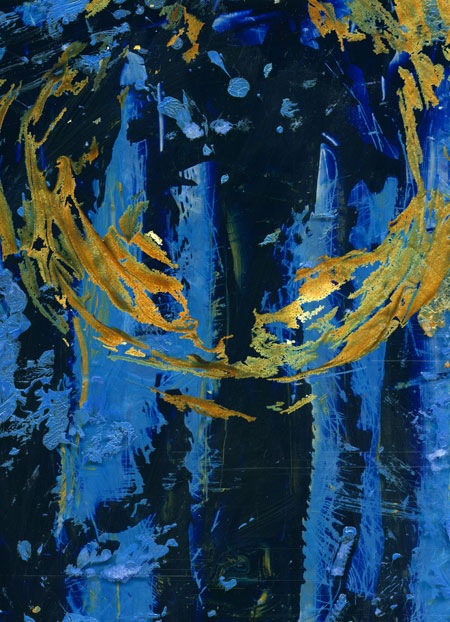Kinfolk © Jan L. Richardson
Reading from the Gospels, Pentecost +2 (June 10), Year B: Mark 3.20-35
I still remember the day during my first year of seminary when Roberta Bondi, in our “Introduction to Christian Thought” course, drew a circle for the class. Placing a point in the center, she then drew lines from points around the circle that stretched toward the center point. This circle, she told us, was first traced by Dorotheos of Gaza, a monk who lived in the 6th century. In one of his homilies, Dorotheos invited his hearers to imagine such a circle, with God as the center point.
“The straight lines drawn from the circumference to the center are the lives of human beings,” Dorotheos said. “…To move toward God, then, human beings move from the circumference along the various radii of the circle to the center. But at the same time, the closer they are to God, the closer they become to one another; and the closer they are to one another, the closer they become to God.” [Dorotheos’s quote can be found in Bondi’s splendid book To Love as God Loves.]
With such persistence, Jesus works throughout his ministry to draw his hearers deeper into this circle. He defines the circle not as a place for folks who have a shared affinity, or who think the same way, or who hold all the same beliefs in common. The circle goes deeper than friendship. It is family.
On the day when Jesus’ kinfolk come looking for him—”to restrain him,” Mark tells us in this Sunday’s Gospel lection, “for people were saying, ‘He has gone out of his mind,'”—the crowd tells Jesus, “Your mother and your brothers and sisters are outside, asking for you.” He replies, “Who are my mother and my brothers?” Looking at those around him, Jesus says, “Here are my mother and my brothers! Whoever does the will of God is my brother and sister and mother.”
Jesus knows what it means to be family. He is not disrespecting his family of birth here; it is from them, after all, that he first learned to treasure the bonds of kinship, bonds that he now draws upon as an image and model for the relationship he seeks to have with us. Jesus simply has a notion of kinship that goes deeper and broader than ours often does. Jesus traces his circle wide, calling us all to be kinfolk to him by doing what God desires us to do. And if kinfolk to him, then kinfolk to one another, with all the delights and aches that come in learning to be a family.
In these days there is much that works to divide us and rend us and turn us away from one another. And so may we instead draw closer to each other as we stretch toward the God who lives at the center of the circle, and who somehow encompasses it—and us—all around.
P.S. I have a new reflection at Devotion Café; click the image or title below to visit:
[To use the image “Kinfolk,” please visit this page at janrichardsonimages.com. Your use of janrichardsonimages.com helps make the ministry of The Painted Prayerbook possible. Thank you!]















June 6, 2012 at 12:16 AM |
Thank you, Jan, for your “Kinfolk” and its lovely explanation! And thank you for your devotion to “The Painted Prayerbook.” So full with color, inspiration, and all other goodness!
June 6, 2012 at 12:51 PM |
Thank you for the prompts on Devotion Cafe. Just what I need to “get me off the dime” and get to work doing what I’m best equipped to do!
June 9, 2012 at 12:52 PM |
Jesus calls us “to be kinfolk to him by doing what God desires us to do.”
I often know what that is, the challenge is to do it.
Kinfolk. Many are raised by people not their parents. The cashier at Wendy’s shared that he was adopted. I returned the favor. My son will adopt soon. A wonderful thing.
June 21, 2012 at 12:31 PM |
Thank you, friends! Gail, I’m so pleased to hear your son will adopt soon. Many blessings to all of you as your circle of kinfolk grows.